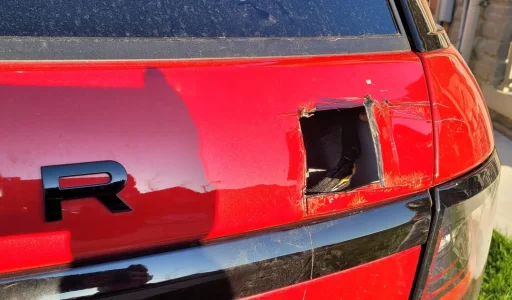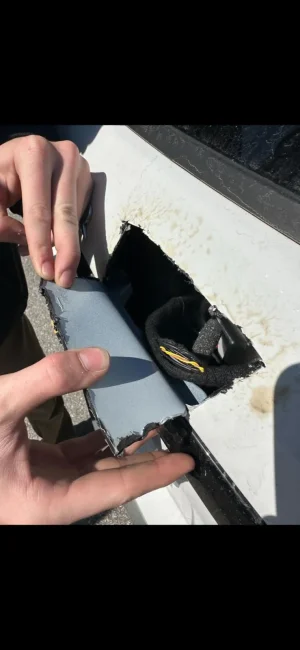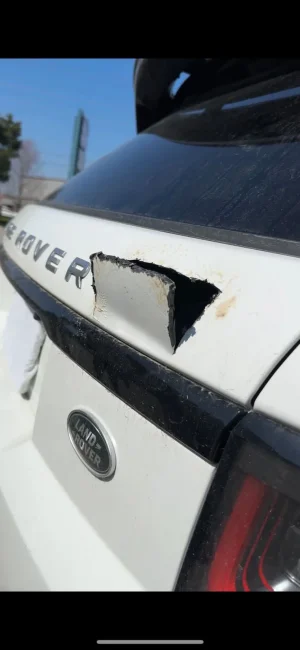IGLA blocks it all, blocks key fobs from being deleted and made and is totally hidden. It also gives off no signals, lights, sounds, cannot be found with scanners ect. Thieves don’t hack the vehicle start circuit, they simply relay/clone the existing fob signal or hook up to the can system and then delete and make a new fob. They do it for most makes and models the same way. Some are easier than others, range rover for example you can cut a hole in the hatch to access them, others you can pull the drivers side headlight assembly.Good to know! Do you know how many control the start function and/or can be hacked for theft?
You are using an out of date browser. It may not display this or other websites correctly.
You should upgrade or use an alternative browser.
You should upgrade or use an alternative browser.
TRX Thefts
- Thread starter Smoke Eater
- Start date
CAN is the Controller Area Network. This twisted wire pair connects to all the control modules and the access port under the dash. Modules are located throughout the car. All cars have this as an international standard starting in 1996. I have heard BMW uses some kind of fiber network in a loop.
Last edited:
- Joined
- Oct 24, 2021
- Messages
- 1,048
- Gallery
- 12
- Reaction score
- 1,703
- Location
- Non-Liberal part of US
- Current Ride
- 2022 TRX Sandblast
Audi does also with the fiber optics. Least they did when I had an S4. Pretty cool, but we wonder why shit breaks,CAN is the Controller Area Network. This twin wire bundle connects to all the control modules and the access port under the dash. Modules are located throughout the car. All cars have this as an international standard starting in 1996. I think BMW uses some kind of fiber network in a loop.
- Joined
- Jan 27, 2023
- Messages
- 16
- Reaction score
- 7
- Location
- NOVA
- Current Ride
- Alpha Truck.
- Current Ride #2
- Not a RaptoR
- Military
- SOF Veteran
That’s helpful. Appreciate the commentary and in depth of understanding you conveyed.It's a bus... therefore, I'd guess... right around... all of them.
- Joined
- Jan 28, 2021
- Messages
- 1,066
- Gallery
- 138
- Reaction score
- 2,140
- Location
- New Jersey
- Current Ride
- 2021 TRX Lvl2
Well... fine.That’s helpful. Appreciate the commentary and in depth of understanding you conveyed.
The mere fact that you asked "which sets of CAN bus wires are involved with starting the vehicle, and which are susceptible to being 'hacked' to steal the vehicle" indicates that you really don't understand the concept of digital communication.
The CAN bus is just that - a communications bus, not unlike a home ethernet network. But a much older ethernet network, before there were switches (intelligent, store-and-forward relay devices that operated at layer 2 of the OSI model and forward data packets based on media access control [MAC] addresses). We're talking about dumb hubs that operate at layer 1 (the physical layer) and just electrically connect each port together, such that when a voltage is applied on one port's transmit pin, it is duplicated onto every other port's receive pin. So any time any device on the CAN bus "talks" (rapidly switches voltage on and off on it's transmit line), every other connected device "hears" it (voltage applied to the receive line). Think morse code, but at a rate of about 100,000 characters per second.
So, given the fact that any device on the bus can talk to any other device, it's perfectly possible to connect to the CAN bus wires on a headlight (because the actual headlight "driver" is also connected to the CAN bus, so that the Front Control Module can send a msg that says, "front headlights - ON!"), and instead send a msg. to the powertrain control module that says, "start the engine".
We can delve further into the protocols, packet structures, arbitration processes, error detection/correction, and a myriad of other concepts, but that's probably not really necessary.
Good?




















